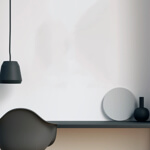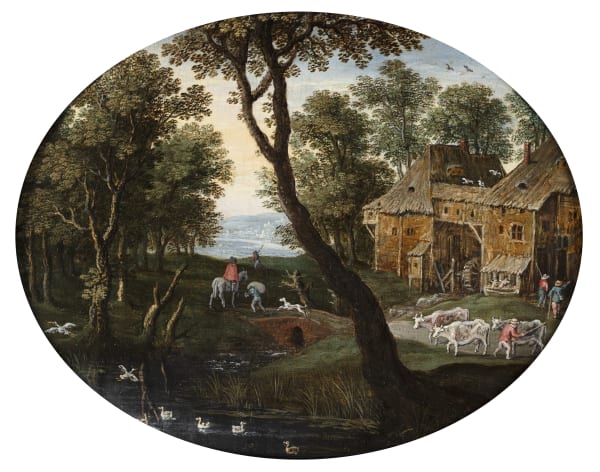Maerten Ryckaert (Antwerp 1587 - 1631)
Just imagine: this gem was painted by an artist who had only one arm. This perfectly preserved round little window on a world and a way of life that are long gone is a delight for the eye that offers an escape from the hustle and bustle of our stressful times.
Marten Ryckaert was born in Antwerp in 1587. He was the son of the painter David Ryckaert I. As the result of a birth defect, he only had one arm, although this did not prevent him from becoming a successful painter. He was first taught by his father; later he was a pupil of Tobias Verhaecht, who was also Rubens’ first teacher. In 1607 Ryckaert became a member of the guild of St Luke – he was registered as “the one-armed painter”. He travelled to Italy between 1607 and 1610. After his return Ryckaert, like his contemporaries Jan Brueghel, Hendrick van Balen and Sebastiaen Vrancx, joined De Violieren, the chamber of rhetoric. Ryckaert was a close friend of Anthony van Dyck, who painted his portrait, which would remain in Ryckaert’s quite extensive art collection until his death; today, it is in the Prado (Madrid). It was engraved and included in van Dyck’s Iconographia.
Marten Ryckaert mostly painted small imaginary landscapes on panel or copper in a style reminiscent of Joos de Momper – especially in the color treatment – and Jan I Brueghel (in the buildup of his compositions). The present work is an excellent example of his style and subject matter: it depicts a – probably fictitious – Flemish village with travellers and peasants walking around, a field of wheat to the right being harvested. It could be argued that the work is in fact an Allegory of Summer, as one work from a series depicting the four seasons. For instance, two other tondos by Ryckaert, one an Allegory of Winter, the other an Allegory of Spring, both very similar in composition to the present work, were sold at Sotheby’s NY in 1983. These however were slightly larger than the present work, which is thus probably not from the same series.
In the treatment of the figures and buildings, the work also compares favorably to another work by Ryckaert, also a tondo, which was also handled by our gallery (now in a private collection) and which depicted the Bleaching of the Linen. Finally, it is very similar in its application of glazes and its handling of foliage to another signed and dated work by Ryckaert, A mountainous river landscape, currently in our collection.
Provenance
French private collection.
- X
- Tumblr




